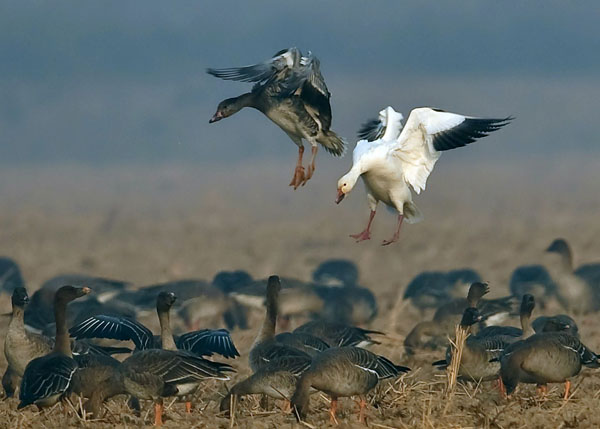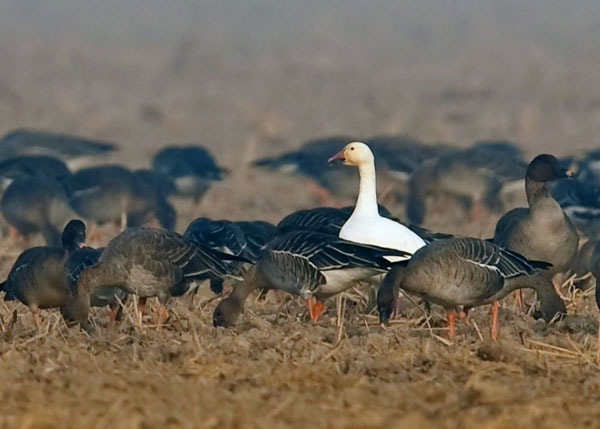nser caerulescens
IUCN
LCBasic Information
Scientific classification
- name:nser caerulescens
- Scientific Name:Snow goose, white goose,Anser caerulescens,Snow Goose,Chen caerulescens
- Outline:Waterfowl
- Family:Anseriformes
Vital signs
- length:66-84cm
- Weight:2.5-2.7kg
- lifetime:25years
Feature
The same shape and color of two sex, pure white body feathers, loyal to love, only one partner for life.
Distribution and Habitat
Rare winter migratory birds in China are found in Heilongjiang, Jilin, Hebei, Tianjin, Jiangsu and Jiangxi. It breeds in North America around the Arctic and northeast Siberia, and overwinters in North America, eastern Siberia, and Japan.
During the non-breeding period in China, it is more common to mix with other geese and live in coastal farmlands, shoals, lakes and reservoirs.
Appearance
The body color is white or blue-gray, the white type is white all over and only the primary feathers are black, the blue type head and neck are white, and the body is blue-black with blue-gray patches on the shoulders. Iris dark brown, beak pink, feet pink.
Details
Snow geese are large, individual birds of the genus Amens. They live in groups ranging from a few to thousands of individuals. When flying into an orderly queue, there are a zigzag, herringbone, etc. In monogamy, both sexes participate in the rearing of chicks.

During the breeding season, snow geese travel several routes, leaving their tracks in northwestern Greenland, northern Canada and Alaska, and northeastern Siberia. Those who do not breed will move away from the breeding group and its small rivers and streams to find a safer area where they can molt and prepare for migration. Because most of the molting of birds is gradual replacement, so that the molting process does not affect the ability to fly. The flight feathers of snow geese fall off all at once, and they completely lose their ability to fly during this period, so snow geese must hide in the lake grass to prevent predators from preying on them.
At the end of August, breeding geese and their offspring, as well as non-breeding geese, gather together, up to 10,000 of them, and with a little pause, begin their journey to the wintering area.
The snow goose is a vegetarian, and its hard beak is well suited for digging into the roots of underground plants, so it mainly feeds on plants. In the Arctic, it feeds mainly on the roots of different plants, cultivated corn seeds, weeds, and equitaria. In the wintering area, the main food is grains and shoots of crops.

The birds make a pleasant, high nasal sound when they fly, like la-luk, and at a distance, like the bark of a young dog.
Every year in late May, snow geese arrive in Alaska's Arctic coastal plain to nest and breed. Nesting areas are usually chosen on higher ground in the tundra and are covered with weeds. A clutch of four to six eggs is laid in early June. The incubation period is 22-23 days. Once the young geese break out of their shells, the mother goose carries her young and moves the family to rivers and streams. Because the newly hatched snow geese do not have the ability to fly, they must find a hidden place to escape from predators. During this time, many snow goose families automatically unite into groups of up to 150-250 geese. Little snow geese grow up well under the hard upbringing of their mother, and can fly high in a short 35-45 days.








